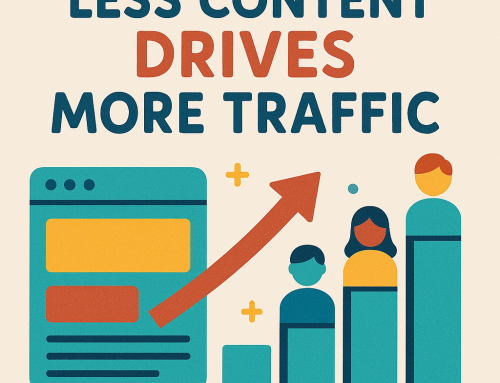 One of the most common mistakes you can make with your SEO is waiting until after your site is designed to consider what’s best for your site’s rankings. Great design starts from a foundation of understanding your core user. When you always keep this ideal customer in mind, design and SEO form a union that is rock solid for all your marketing efforts.
One of the most common mistakes you can make with your SEO is waiting until after your site is designed to consider what’s best for your site’s rankings. Great design starts from a foundation of understanding your core user. When you always keep this ideal customer in mind, design and SEO form a union that is rock solid for all your marketing efforts.
There are many design trends these days, and each of them have their own SEO challenges. Whether you choose responsive, HTML5, or parallax design, or any hybrid thereof, considering your SEO needs as you create or re-launch your site is imperative.
Great design isn’t just about creating a beautiful and intuitive experience, it also involves stellar usability, solid and secure architecture, and a site that is accessible across all screens and media devices. Master these elements, and your SEO will naturally follow suit.
Deciding Which Type of Design is Right for Your Business
Let’s dissect the three major site design options these days, along with their related SEO pros and cons.
First, there’s the ever-popular responsive option. Responsive design means your site will adjust based on the size of the screen the user is accessing your content on. Instead of a native mobile site, responsive uses the same core look and feel across all platforms. It creates uniformity and consistency, but inhibits your ability to tailor a design for each screen option.
It’s the most popular option for a reason, however; Google recommends responsive design. SEO is solid with this option because responsive does not dilute your URL strength by requiring different variations. Users access your site through one URL, and it then adjusts based on the device used. This allows you to ramp up external backlinks and track SEO strategies for a single domain structure, which can vastly simplify your efforts.
The biggest con with responsive is that it forces you into a one-size-fits-all strategy. There’s no opportunity for mobile-centric keywords, no creating a custom-made navigation structure for small screens. If this is a blessing rather than a creative limitation, responsive is a fantastic option for your site.
Parallax sites have been all the rage lately; they consolidate content onto a single page, or a very compact site structure. From a user perspective, this is golden, and many businesses report much higher conversion rates when they shift to a parallax strategy. If you have a strong and clear story to tell about your business, you can walk users through this vision in a much more impactful way on a single page.
From an SEO perspective though, parallax has serious challenges. You’ll find it a lot more difficult to rank for a variety of keyword phrases, and with just a single page or compact site, there’s far less for Google to evaluate and crawl. That said, if you incorporate a parallax strategy into a multi-page site, you can indeed have the best of both worlds.
Finally, there’s the controversial HTML5 option. Often heralded as the next big thing in web development, the hindrance with HTML5 is it can be a beast to program correctly. The versatility and sure power is off the charts though, and if you require complex functionality, HTML5 can handle it. The trick of this from an SEO perspective involves JavaScript, which is required for a lot of the whiz-bang features. Google and company often have issues crawling this kind of content, which means your content is essentially unreadable. The solution, should you choose to take the time and effort, is to create a static version of the JavaScript heavy content too. That gives users the fabulous animated option, and search engines get access as well.
Designing Pages that Woo People and Search Engines
As you look at your site with an eye towards usability, remember that simplicity and intuitive design are integral to a successful offering. Getting creative on your navigation category terms, as an example, may feel like you’re adding flair and personality, but ultimately, if you’re confusing users and search engine bots, you just won’t flourish.
These days, a less is more strategy is also proving fruitful. It used to be that a myriad of categories provided more searchable content and opportunities for keyword variances. This is shifting, however, and savvy SEO professionals are recommending a more streamlined and focused site structure.
If you already have a site that you’re looking to improve upon, here’s a tip to determine how the design of each page is fairing. Look at your bounce rates, and compare them to the keywords that are most applicable. If you find that there’s an abundance of traffic funneled from keywords that just don’t seem relevant to the page, you’ve uncovered a smoking gun. Your job in those cases is to tailor the content on each page to match the interest of the incoming traffic. Master the process of giving people what they want, and your SEO will catapult.
Whichever design trend you chose, educate yourself on the SEO challenges and benefits as early in the process as possible. If you’ve already launched your site and are working backwards, use the bounce rate strategy as a first step to SEO domination. As long as you have a clear view of who your site serves, you can always improve the overall experience.
What other pertinent parallels have you discovered between web design and SEO? Is one method better than another in your experience?





